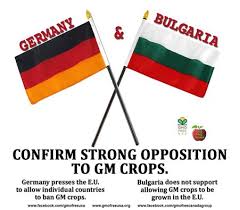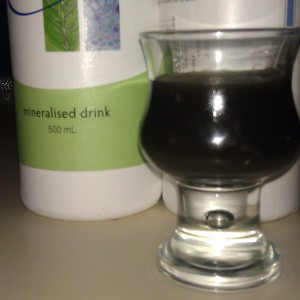Our bodies are literally millions of years old. When Homo Sapiens once appeared on Earth, all they had, when they came out of the cave, was the bounty of the jungle. It was in the forms of fruit, berries, leaves, roots, occasional fish and meat, from the occasional successful hunt. Those fruits were bursting from goodness as they thrived on the nutrients and minerals rich volcanic soil. Rain and/or flooding was bringing mineral-rich rock dust and sand sediment from above the mountains down to the plains. We were meant to be hunters, fishers, and gatherers. No coffee, no take away food, no preservatives. The food was then no more than a day old or no food at all. Fast forward to 21 century, it looks very different. We live in massive cities; food comes from hundreds of miles away in refrigerated containers, collected green and ripened in transit, with the presence of chemical gases. Then we keep it for days in the refrigerator at home. Our lives are different now. We can’t live like Neanderthals, we say. Our bodies haven’t changed that much thou, we still need the same nutrition to stay young, healthy and active. If not from the ground, into the fruit and veg, where do we get our 60 colloidal minerals from? The answer is: from quality supplements, designed to be 100% absorbed within 15-30 min. How do you know which ones? We do.
Here is an extract from publication from 2011, called: “New soil composition data for Europe and Australia: Demonstrating comparability, identifying continental-scale processes and learning lessons for global geochemical mapping”
Abstract New geochemical data from two continental-scale soil surveys in Europe and Australia are compared. Internal project standards were exchanged to assess comparability of analytical results. The total concentration of 26 oxides/elements (Al2O3, As, Ba, CaO, Ce, Co, Cr, Fe2O3, Ga, K2O, MgO, MnO, Na2O, Nb, Ni, P2O5, Pb, Rb, SiO2, Sr, Th, TiO2, V, Y, Zn, and Zr), Loss On Ignition (LOI) and pH are demonstrated to be comparable. Additionally, directly comparable data for 14 elements in an aqua regia extraction (Ag, As, Bi, Cd, Ce, Co, Cs, Cu, Fe, La, Li, Mn, Mo, and Pb) are provided for both continents. Median soil compositions are close, though generally Australian soils are depleted in all elements with the exception of SiO2(Silicone Oxyde) and Zr(Zirconium).This is interpreted to reflect the generally longer and, in places, more intense weathering in Australia. Calculation of the Chemical Index of Alteration (CIA) gives a median value of 72% for Australia compared to 60% for Europe…….In Australia, the central region with especially high SiO2 concentrations is commonly depleted in many elements.The new data define the natural background variation for two continents on both hemispheres based on real data. Judging from the experience of these two continental surveys, it can be concluded that analytical quality is the key requirement for the success of global geochemical mapping.
Baby boomers will remember a time when all food was organic. It wasn’t that long ago. We were going to the local fruit & veggie market and the person selling the produce was most likely the grower as well. They took pride of their product. There were a couple of those produce cut, for the buyers to smell and taste. Nowadays, commercial farming is taking place on a mass scale. It is all about quantities and appearance. Farmers produce two, sometime three crops, exhausting the soil from minerals after only two years. There is no time for the soil to recuperate. Artificial fertilisers – products of the chemical industry – are then dusted in, designed to replace only those soil minerals that make the plants appear big and healthy. There is nothing organic, nothing decomposing. Then the plants are sprayed with pesticides, fungicides, and herbicides – also products of the chemical industry. They are presumed as “Safe for Human consumption”. Why it is then that those are classed as poisonous substances of Class 6 according to the UN Code of Dangerous Substances? Perhaps because we have them in small quantities? Perhaps we have become regular consumers of toxic products, without even being aware of it.
The fruit looks big, fleshy but tasteless and it has been collected unripe to allow for transport and storage. This of course interferes with the normal process of converting all the enzymes. In nature if any fruit is still green is usually camouflaged among the leaves of the plant. It changes colour to noticeable bright yellow, orange, red or beige, only when is ripe – to advertise that enzyme conversion has finished and is ready to be consumed. The end product is a fruit or vegetable that is relatively poor in nutrients. This is industrialised food production. Same applies to cattle, milk cows, pigs and poultry farms. Australian cattle normally run free, feeding on grass, occasionally grain and some high-protein supplements, which were soya, corn, sunflower pellets, after the oil has been squeezed out. In some farms, those pellets are likely to be mixed with BBM, a high protein meal, which stands for Blood & Bone Meal for accelerated growth. It is what is left from carcasses at the abattoirs, then grinded and mixed with grain pellets and then fed to the herbivore animals. Much of the cereals is GM(genetically modified) crop.
Jack remembers as a boy visiting his grandparents at the countryside. There was a 3 y.o. rooster with shiny feathers, roaming free in the yard, with legs thick as an adult man’s thumb. Now this is the size of the leg of a 6 weeks old chook, that has never laid an egg and that we are offered to buy BBQ-ed from the local supermarket. They had growth hormones added, antibiotics added etc. It usually weights 2.5- 3kg.
Lately the topic of GMG (Genetically Modified Grain) is being discussed. We are told that it is weed resistant. That is not entirely true. It is weed-killer resistant. It is genetically modified in scientific laboratories, financed by large grain trading companies, to be resilient to the weed-killers that they are sprayed over the crops, so it kills only the tough-to-kill weed, but not the wheat. As a result, our bread will contain a modest portion of the weed-killer. Genetically modified it means that the genes from one spices is forced into the DNA of another species. Lab tests with mice that were fed GM potatoes have developed pre-cancerous cell growth, smaller brains, livers and testicles, partial atrophy of the liver, damaged immune system in 10 day of eating that food. Corporate giants like Monsanto, Dupond and Eli Lilly are responsible for this monstrocity. Here is a proof of how much arrogance they have:
“Monsanto should not have to vouchsafe for the safety of biotech food. Our interest is in selling as much of it as possible. Assuring it safety is FDA’s job.” – Phill Angell, Monsanto’s Director of Corporate Communications, quoted in “New York Times” on 25 October, 1998.
In the EU only two countries so far have banned GM crops: Germany & Bulgaria.
According to people who have done extensive research in nutrition, (e.g. Phillip Day(UK), Chris Woollams(UK), David Wolfe(USA), as well as our own Dr Peter Dingle(AUS)) we should consume raw vegetable food of the best organic quality that we can afford, in quantities of anything between 60-80% of our total food intake, providing that we are not suffering from anything serious. If a serious condition is present, that should be increased to 80-100%. Of course, with our busy lives of juggling work, family and finances, we cannot always do that. Therefore, a source of good quality nutrition is of absolute essence. Of course, the question of quality comes to mind. See video trailer “Food Matters” or choose the full version film.



